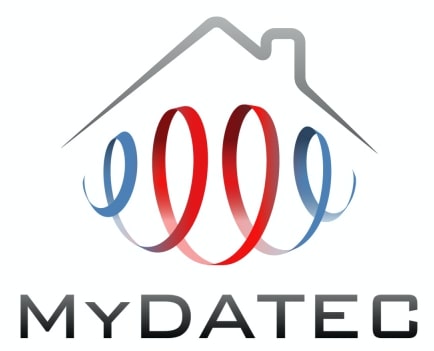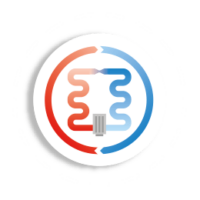VMC
Indispensable for the renewal of the interior air, controlled mechanical ventilation guarantees a healthy house. Today, it plays an important role in improving the comfort of occupants’ lives and its choice must meet criteria of efficiency, energy performance and ergonomics. What is the operating principle of a CMV? What are its advantages and disadvantages? Which type of CMV should I choose, single flow or dual flow? What does the VMC regulation say? How much does a CMV cost? What does MyDATEC offer?
Overview.
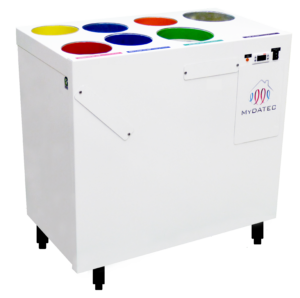
WHAT IS A VMC ?
A CMV or controlled mechanical ventilation is an aeraulic system installed within a building. Its main function is to renew the air in a building.
It consists mainly of :
● A casing which contains 1 fan motor, 2 if it is a double flow CMV)
● An aeraulic network of extraction (ducts + mouths)
● Air inlets on the joineries of the living rooms or an aeraulic network of insufflation if it is about a double flow CMV
OPERATING PRINCIPLE
The operating principle of the VMC is explained as follows. The ventilation network of the CMV is equipped with inlets and outlets to manage the incoming and outgoing airflow.
● The exhaust vent draws stale air from the kitchen, pantry, laundry room, bathroom, and toilet to the outside.
● The new air makes its way through the air inlets at the level of the joineries to enter the living rooms and clean the interior atmosphere. If it is a double flow CMV, the new air does not go through the openings at the level of the joinery but by ducts and air inlets.
● A static/passive exchanger (classic double flow) or an active exchanger (thermodynamic double flow) between the incoming and outgoing flow allows to keep a large part of the calories (classic DF) or even to produce hot and cold air (thermodynamic DF)
WHY IS IT NECESSARY TO VENTILATE?
The more insulated and airtight the building, the more necessary it is to have a ventilation system capable of removing pollutants from the building.
Indoor air pollutants are of 3 types:
– The CO2 that we release through our breath, if present in too large a quantity, causes problems of concentration and sleep.
– The water vapor, H2O, that we reject by breathing but also by the showers, the cooking vapors, the washing machine and dryer, is responsible for the degradation of the building and favors the proliferation and the development of bacteria inside the premises.
– Volatile organic compounds, VOCs, are present in large quantities in household products, furniture, detergents, tobacco, etc. They are carcinogenic for our body
It is therefore essential, and all the more so in a recent building, to expel these pollutants to the outside in an optimal and mechanical manner.
The MyDATEC systems renew the indoor air more than conventional systems and control, thanks to sensors, the thresholds that should not be exceeded in the home. If the threshold is crossed, then the machine “over-ventilates”.
ADVANTAGES AND DISADVANTAGES OF THE THERMODYNAMIC DOUBLE FLOW VENTILATION SYSTEM
Ideally designed to improve your indoor comfort, the MyDATEC CMV solution combines a number of advantages.
● A system capable of adapting to different types and sizes of buildings
With a coverage capacity of approximately 250 m2, the MyDATEC system can renew the air in a home and can be expanded to meet the ventilation needs of a larger area. Our solutions are particularly appreciated in homes, medical practices, day care centers, schools and professional offices. MyDATEC is involved in the new and renovation of buildings.
In order to treat a larger building, we multiply the VMC systems. This allows us to treat buildings in several control zones.
● An autonomous system and a simple and intuitive control
The system regulates itself according to the user’s desired temperature. These settings will allow the system to automatically change modes (heating, ventilation, over-ventilation, dehumidification, free cooling or active cooling).
Thresholds for pollutants (VOCs) and humidity not to be exceeded can also be specified to the system. In addition, a fine programming can be configured to modulate the temperature requirements in the building according to 8 daily time slots and differentiate between weekdays and weekends.
● In addition to ensuring healthy air in the building, the production of hot and cold air is clever and very energy-efficient.
By recovering the energy from the stale air just before it is exhausted from the home, our system is able to :
o Increase the temperature of the fresh air flow entering the dwelling, about +27°C in heating mode (winter and mid-season).
Example:
If 0°C outside, at the start of the machine the supply air to the living rooms (living room, bedrooms) will be 27°C
If 10°C outside, the air blown in will be 37°C (excluding electrical resistances)
o Lower the temperature of the fresh air flow entering the dwelling, about -17°C in cooling mode (summer).
Example:
If 37°C outside, the supply air will be about 20°C.
To ensure this energy production, the system consumes the equivalent of a domestic refrigerator + freezer (with a consumption between 500W and 800W) depending on the models of VMC and the sizes of the projects to be equipped).
● A ready-to-install kit and easy installation
MyDATEC provides an assembly guide for the parts that make up your thermodynamic CMV.
It provides you with the guidelines to connect all the equipment, from the air components to the various connections.
MyDATEC makes an explanatory diagram on the plans of your project in order to facilitate the installation of all the components of the “aeraulic kit”. This set is made up of ducts, distribution boxes, control units, extraction and insufflation outlets, roof or wall outlets, clamps and other installation accessories.
If necessary, a MyDATEC-approved installer can come to the site to install the device and put it into operation.
● The disadvantage of the thermodynamic double flow ventilation system
The only disadvantage of this system is its higher acquisition cost than the standard single and double flow ventilation systems on the market. However, its value is measured by its energy efficiency, its robustness and its versatility which satisfy the needs of our users in all seasons
Let’s make a comparison between the different types of single flow, double flow and thermodynamic double flow CMV.
SINGLE FLOW VS. DOUBLE FLOW
Any ventilation system, whether it is a single flow or a double flow CMV, allows to renew the indoor air. On the other hand, we can list some important differences between each type of CMV.
SINGLE FLOW VMC
The single flow CMV cleans the indoor air by extracting the stale air in the rooms known as with specific pollution by mouths and ducts and by introducing (by depression) fresh air via air inlets at the level of the joineries of housing.
However, thermal shock is inevitable. The temperature difference between the outside air and the inside air will affect the comfort of the occupant. To compensate for this difference, its heating needs increase in winter. Similarly, its cooling needs increase in summer.
In addition, the air is not filtered before entering the building, which causes air quality problems.
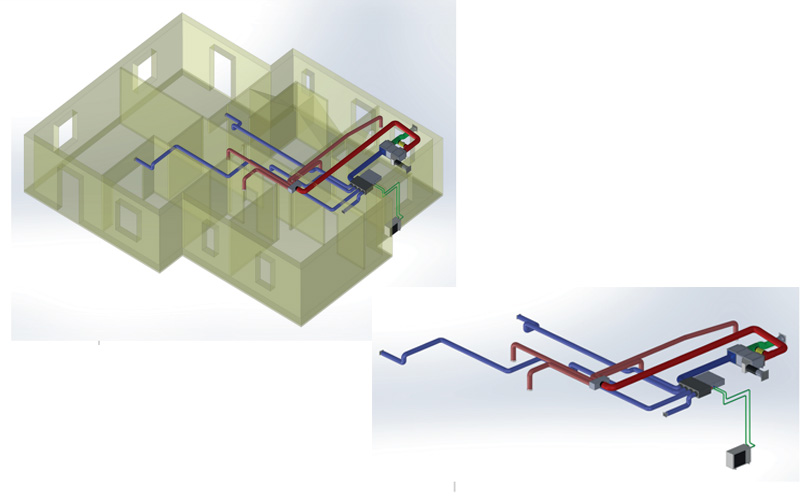
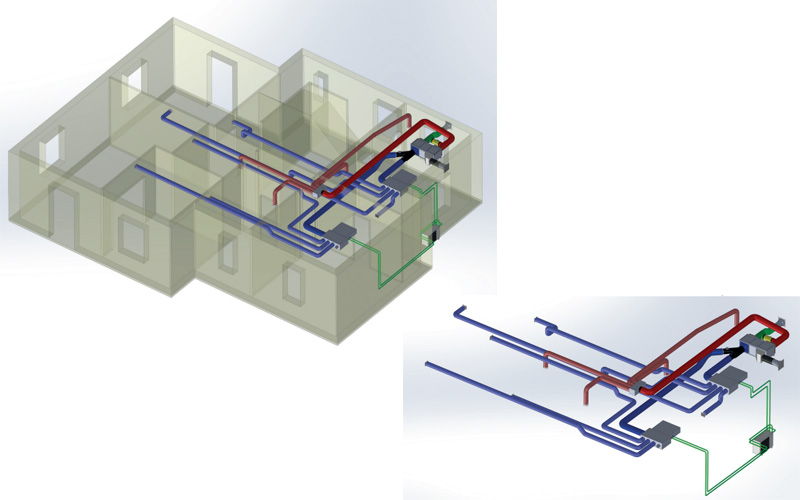
THERMODYNAMIC DOUBLE FLOW VMC
Like the double flow CMV, the thermodynamic double flow CMV is able to conserve energy present inside thanks to the thermal exchange between the air going outside and going inside. However, it has a major advantage, its reversible heat pump which ultimately an active exchanger. It is capable of harnessing the energy in the extracted air before it is exhausted to the outside to produce heating or to cool the interior.
SINGLE FLOW VMC VS CLASSIC DOUBLE FLOW
Compared to the single flow CMV, the double flow CMV is able to conserve a large part of the building’s energy during the air renewal (about 80%). Equipped with a heat exchanger, it retains the energy of the stale air and transfers it to the new air via a plate exchanger (static exchanger). Thus, the heat losses related to the ventilation of the premises are controlled.
Thanks to the filtration of the fresh air, the air blown into the rooms is healthy. No insects, dust, pollen, fine particles etc.
OUR THERMODYNAMIC DOUBLE FLOW VMC
Forget the freezing cold of winter and the scorching heat of summer by adopting the MyDATEC CMV. The brand offers two models of thermodynamic double flow CMVs that are adapted to the specificities of tertiary buildings, passive houses and new constructions. In accordance with the VMC regulation, these options improve your energy label.
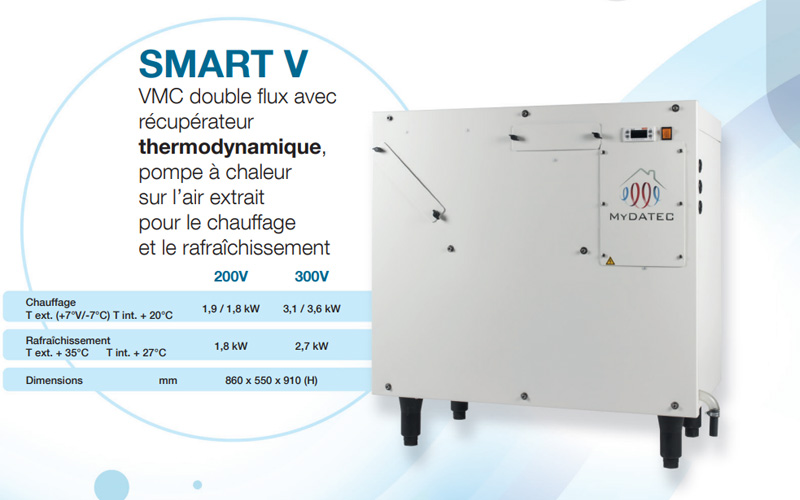
SMART V THERMODYNAMIC DOUBLE FLOW
The SMART V thermodynamic dual-flow CMV system combines all the functions to efficiently ventilate, cool, heat and dehumidify your rooms. The Smart V has a lot going for it:
- The reversibility of the system allows the production of fresh air in your living rooms (living room, lounge, office and bedrooms) and thus guarantees your summer comfort.
- With a small footprint, 1 m wide and 50 cm deep, the Smart V can be installed in a utility closet, a laundry room or a cellar. The duct outlets are on top of the system, so the ducts go directly to the attic or the false ceiling in a vertical way.
- The filters are easily accessiblefrom the front of the machine. Well insulated in a heated volume of the building, the system maintains its performance perfectly, impacting only 0.5 m2 of surface of your house.
SMART H THERMODYNAMIC DOUBLE FLOW VENTILATION
Smart H is a solution that is suitable for both installation and replacement of an existing machine often installed in the attic. Its characteristics are very well suited to tertiary buildings. It can be installed in the false ceiling. This is due to its low height of 50 cm and its layout which allows for the horizontal deployment of its ductwork thanks to its 4 modular outlets.
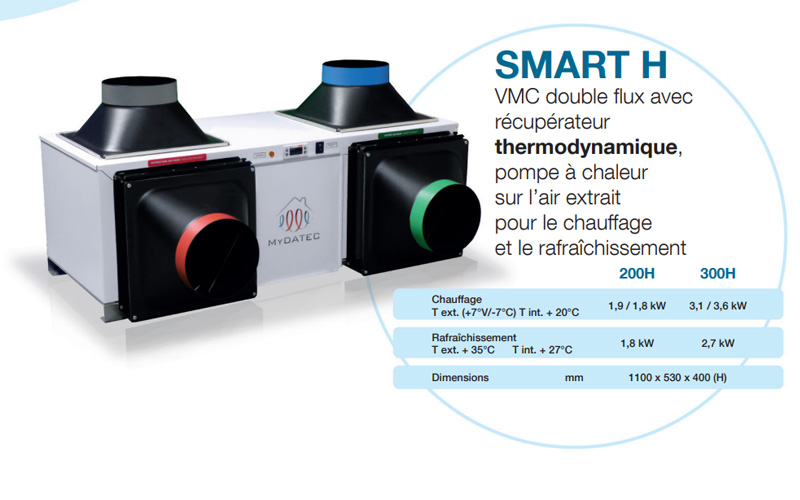
VMC PRICE
The price of a mechanical ventilation depends on several criteria. It depends on the size and complexity of the project, the CMV model, the options and the complementary systems associated with the CMV unit. Here is a complete article that details all the criteria taken into account in the establishment of the VMC price.
REGULATION AND AUTOMATIC CONTROL
MyDATEC makes it easy to control your new system with a centralized touchscreen control. Indeed, you will be able to control 2 regulation zones (day/night zone of a house for example)
In addition to being autonomous, the VMC is self-regulating according to 3 set point parameters:
- The temperature
- Humidity
- VOCs (volatile organic compounds)
REMOTE CONTROL
The remote control of the VMC is now possible via your Smartphone or PC thanks to the MyCONNECT option.
Discover all the specificities of the remote control (3-4-1 Remote control).

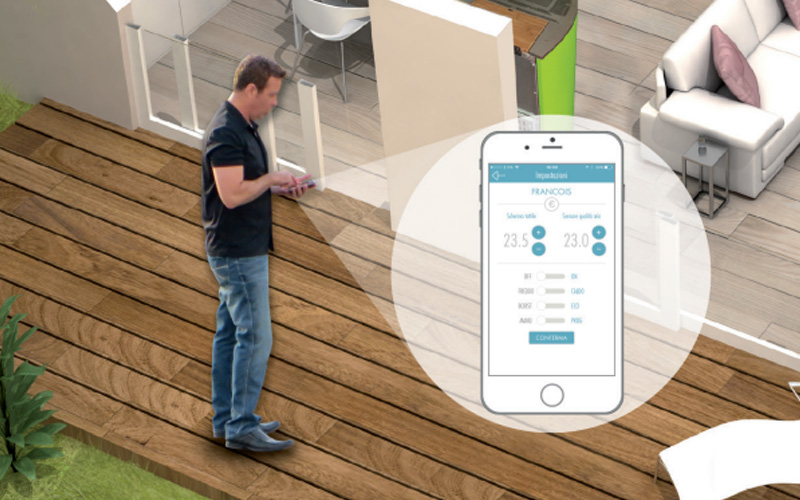
PILOTING PELLET STOVE
With the pellet stove control option, the VMC is able to automatically turn on the stove if the VMC fails to reach the temperature set point during the harshest winter months.
The stove is then turned on for 1 cycle of 1 hour (configurable) and at the end of this cycle, the machine automatically tells it to stop if the set point is reached or to continue operating for a new cycle.
The user can also force the stove to operate if desired via the touch screen control of the MyDATEC CMV.
With a single command, you can trigger a secondary heating source.
CONTROL OF ELECTRIC COMPLEMENTS
In the same way, the MyDATEC thermodynamic CMV is able to control the triggering of electrical complements. For example, radiators, electric floor heating systems or heated ceiling tiles in offices.
REGULATION VMC
CMV systems are subject to installation rules. It is the DTU 68.3.
Here are extracts of the decrees of March 24, 1982 and October 28, 1983 specifying the methods of application of the article R.111.9 of the Code of the construction and the dwelling and specifying the flows entering and leaving to be implemented in order to renew sufficiently the air of the buildings.
Art. 3 – The ventilation devices, whether mechanical or naturally operating, must be such that the extracted flow requirements, defined below, are met under average winter weather conditions.
Max: The flow rates extracted in each service room must be able to reach simultaneously or not the values given in the table below according to the number of main rooms in the dwelling.
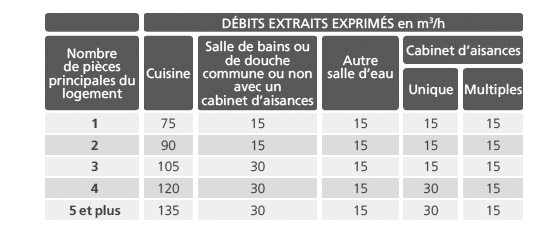
CUSTOM-BUILT AIR HANDLING UNIT NETWORK
In order to choose the best option for your building, it is carried out systematically airflow diagram proposed free of charge by our experts. It consists in taking into account the technical constraints of the project, the aesthetic wishes of the customer and the technical characteristics of our air octopus system. A detailed drawing is then made in order to allow us to build the custom-made airflow kit in our workshop and to allow the installer not to make any mistake during the complete installation of our system.
